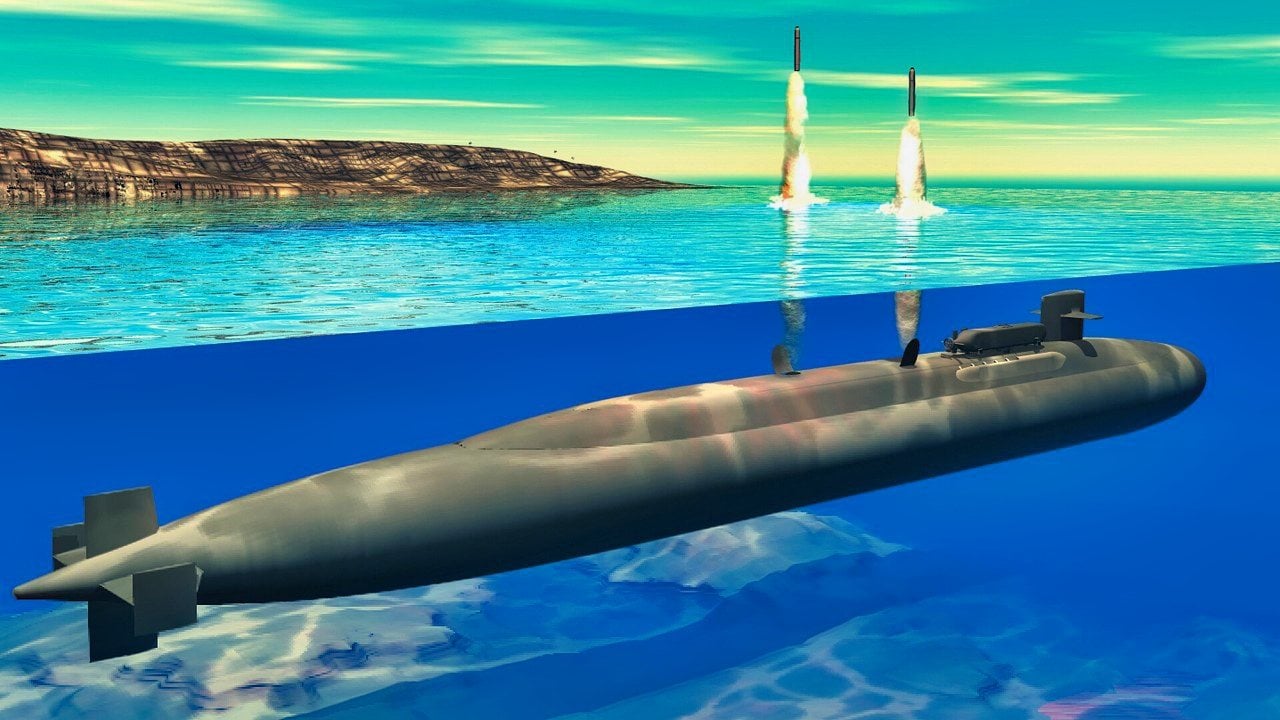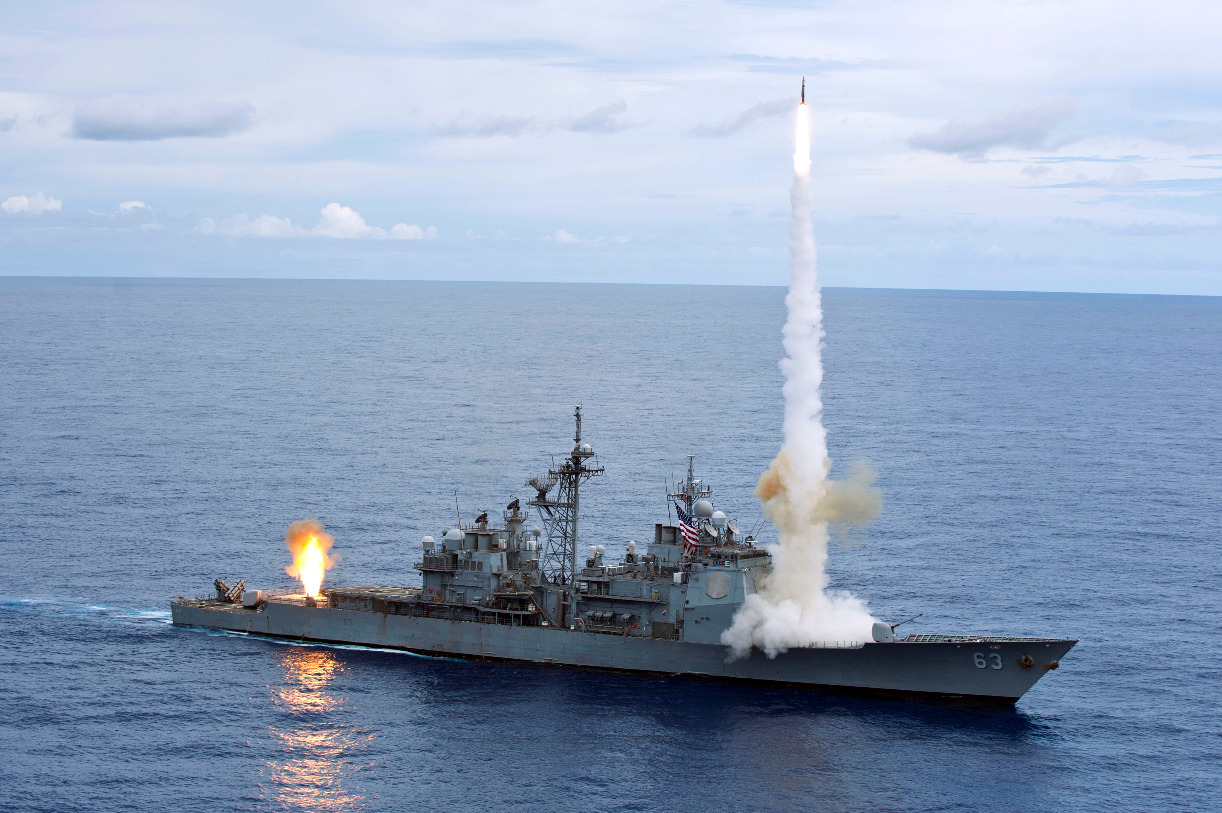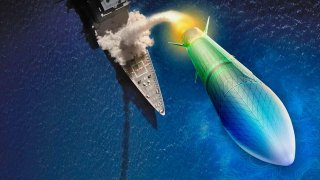It’s Past Time to Re-Supply Our Munitions-Depleted U.S. Navy
Only by sending a meaningful demand signal to industry with big multiyear contracts and the resulting cash infusion the defense industrial base needs for long-term planning and investment can the U.S. start to replenish its depleted munitions stockpiles and prepare for the challenges ahead.
When Iran launched more than 300 one-way drones, ballistic missiles, and cruise missiles at Israel, nearly all of the munitions were intercepted by Israeli, British, French, Jordanian, and American defenses.
This was more than just a win for a key ally. The Iranian attack on Israel provides insight into what might occur in a high-intensity conflict between the U.S. and China, though on a smaller scale.
It also brings to the forefront the importance of missiles and interceptors, something that the U.S. Navy is short on. While the Department of Defense has invested in warships that, when combined, possess roughly 10,000 Vertical Launch cells (VLS), the military does not have enough munitions to reload them even once.
Through 2023, the U.S. has procured roughly 12,000 Standard Missile-2s (SM-2), 400 Standard Missile-3s (SM-3), 1,500 Standard Missile-6s (SM-6), and 9,000 Tomahawk Land Attack Missiles (TLAM) – the principal VLS-launched weapons.
Over that same time, it has expended at least 2,800 Standard Missiles and 2,900 TLAMs, leaving the U.S. with on-paper maximums of roughly 11,000 missiles in the SM-series, and 6,000 TLAMs – for a total of roughly 17,000 VLS-launched munitions. In other words, the U.S. cannot reload the full complement of VLS even once.
And 17,000 missiles is a significant overstatement of what is actually in the U.S. arsenal. An unknown number have been used for training, and others lost to attrition and retirement, with the Wall Street Journal estimating TLAMs to be at 4,000 in 2020. Furthermore, as an operational consideration, these munitions will not all be in the relevant theater for timely resupply.
One reason the U.S. is experiencing a munitions shortage is that the primary focus of U.S. military has been executing counter-terrorism operations and operations against states without significant air-defense capabilities. This overmatch negated the immediate necessity for standoff munitions and led to a historic de-prioritization of acquiring high-end munitions.
True, the Pentagon has increasingly acknowledged a need to procure more high-end munitions, and has put more money into it. But their procurement requests have not included enough of them. The Pentagon has been buying 125 SM-6s annually since 2017, and only 122, 70, and 68 new Tomahawks were funded in 2021, 2022, and 2023. In fact, the President’s Fiscal Year 2025 Budget Request doesn’t include any Tomahawks for the Navy and does not elevate the number of SM-6s procured.
VLS-launched missiles are more important than ever, given the challenges posed by Iran and especially China.
Iran’s attacks in the Red Sea and against Israel show the importance of a robust anti-missile capability. The SM family of missiles shot down incoming threats, preventing some damage to shipping, and likley saving numerous lives. Without using a Standard Missile, U.S. warships would be unable to provide a measure of security to Red Sea shipping, as their other armaments do not have sufficient range.
A war with China would almost certainly see even more dangerous attacks and require a larger and an even more robust anti-missile and anti-aircraft capability, due to the higher sophistication of the Chinese threat.
If U.S. magazines are empty, the U.S. Navy will be unable to effectively deploy to defend American interests. Not only will American VLS-armed surface combatants be rendered toothless, but aircraft carriers will be effectively undeployable. Carriers depend on VLS-armed escort ships to defend themselves from missiles and other threats. Without them, they are too vulnerable. That will leave the U.S. fleet with only submarines, and even those would be rendered less effective, only able to deploy torpedoes – which are also in short supply.
It is important to act now. Producing high-end precision guided missiles can take two to three years, plus time associated with increasing manufacturing capacity.
President Xi Jinping has set a 2027 date for his military to be ready for an invasion of Taiwan. The weapons we have at that time will be the bulk of what we have available for the first six months to a year of the war. That means we need to drastically increase production now, rather than later.
The days where the most relevant threats to U.S. national security lack air-defense capabilities are over. Iran, Russia, and especially China have formidable air-defense capabilities that will limit America’s ability to employ short-range munitions, especially at the onset of a conflict. This creates a pressing need for long-range munitions – especially Standard Missiles and Tomahawks.

The Pentagon and Congress need to propose and approve a multi-year contract for Tomahawk missiles, which does not exist today, while also expanding its multiyear contract for SM-6s. Multi-year contracts provide a sustained demand signal to industry, allowing them to boost production from a business perspective by creating predictability.
Only by sending a meaningful demand signal to industry with big multiyear contracts and the resulting cash infusion the defense industrial base needs for long-term planning and investment can the U.S. start to replenish its depleted munitions stockpiles and prepare for the challenges ahead.

About the Author: Jim Fein
Jim Fein is a researcher for national security and European affairs at The Heritage Foundation.
All images are Creative Commons.


